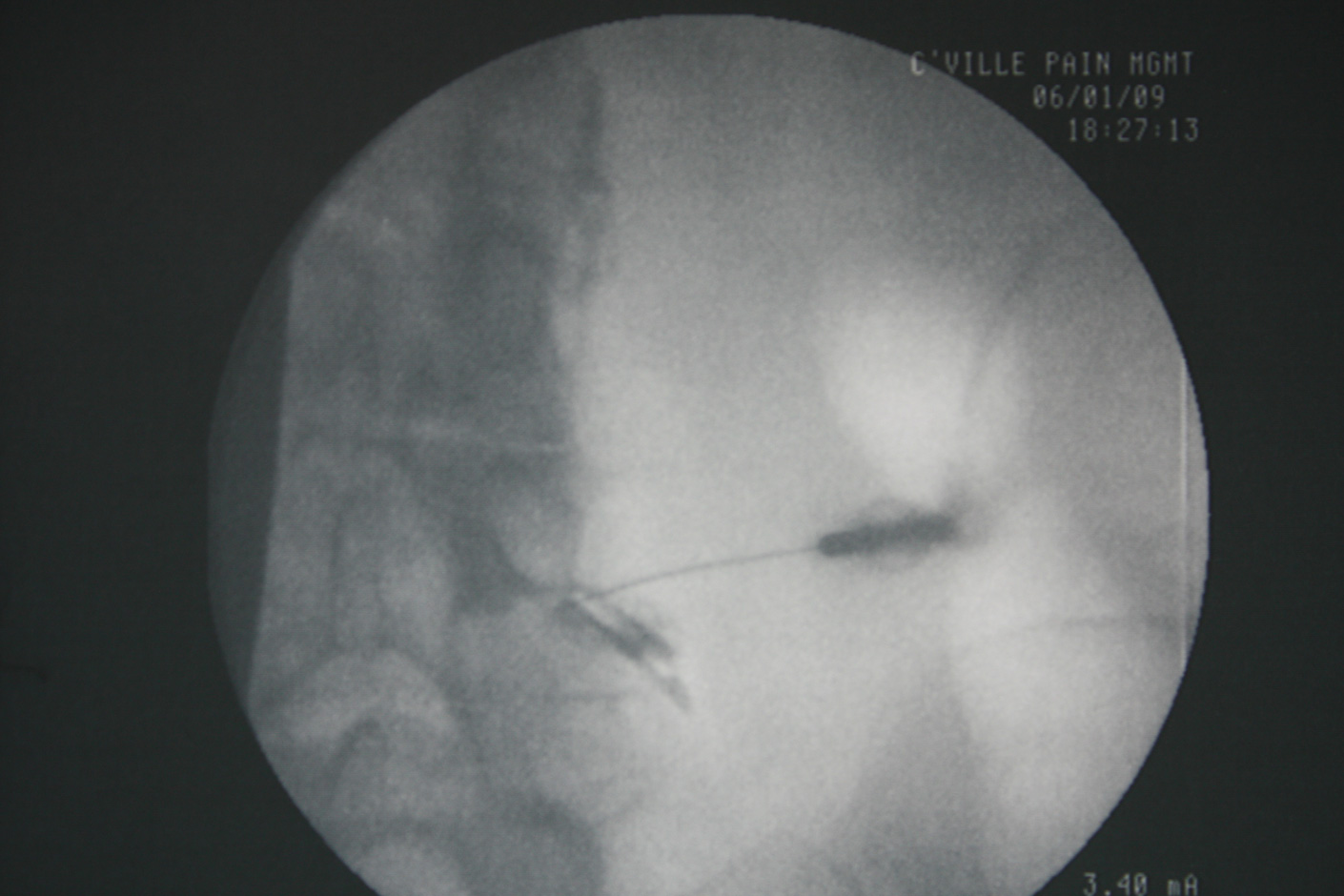Lumbar Interlaminar Epidural Steroid Injection
A lumbar epidural steroid injection is the injection of steroid in the epidural space (the area which surrounds the spinal cord and the nerves coming out of it). This injection is administered to relieve pain in the low back, hips, and legs caused by pinched nerves in the low back (sciatica). The pinched nerves are typically caused by spinal stenosis or herniated discs.
The injection typically serves 3 purposes:
- Therapeutic, to provide for pain relief.
- Diagnostic, to help identify the source of your pain.
- Prognostic, to help decide the next step ie.do nothing, second injection (same type of injection or a different injection), physical therapy, or even an evaluation by a surgeon.
The steroid injected reduces swelling and inflammation of nerves, which may reduce pain, tingling, numbness, and other symptoms caused by nerve inflammation, irritation, or swelling. The steroid we use is betamethasone (Celestone-Soluspan). The procedure is performed under live x ray and with the use of x ray dye to ensure accuracy and precision. The procedure involves cleaning your skin with an antiseptic solution. The skin and deeper tissues are numbed with a local anesthetic using a very thin needle prior to inserting the Epidural needle. The procedure is done under local anesthesia, so you are not “put out” for the procedure. The procedure is performed while you are lying on your stomach. You are monitored with a blood pressure cuff and a blood oxygen monitoring device which monitors your oxygen levels and heart rate. Immediately after the injection, the skin is cleaned and a band-aid is applied. You may experience some “pressure” at the injection site and this may last up to an hour. Your pain may return and you may have a “sore back” for a day or two. This is due to the mechanical process of needle insertion as well as initial irritation from the steroid itself. At about day #3 you should start noticing pain relief. It may take up to 2 weeks to notice an improvement from the steroids. Generally speaking, the procedure is safe; however, with any procedure there are risks, side effects, and possibility of complications. The most common side effect is pain- which is temporary. The other risks involve spinal puncture with headache (post dural headache), infection, bleeding inside the epidural space with nerve damage, worsening of symptoms. The other risks are related to the side effects of cortisone, which include weight gain, increase in blood sugar (mainly in diabetics), water retention, and suppression of the body’s own natural production of cortisone.
If you are taking blood thinning medications (coumadin, arixtra, fragmin, innohep, lovenox, normiflo, orgaran, acova, angiomay, ipravask, pradaxa, plavix, heparin, ticlid or in some cases aspirin) you must tell your doctor. In many cases, the bloodthinning medication is discontinued prior to the procedure, but this has to be cleared by your family doctor and sometimes your cardiologist.

